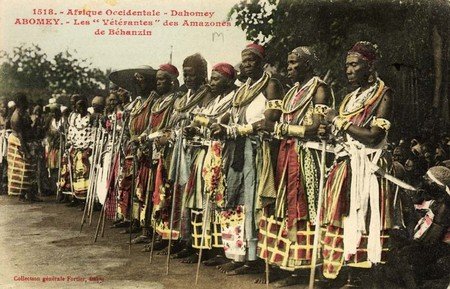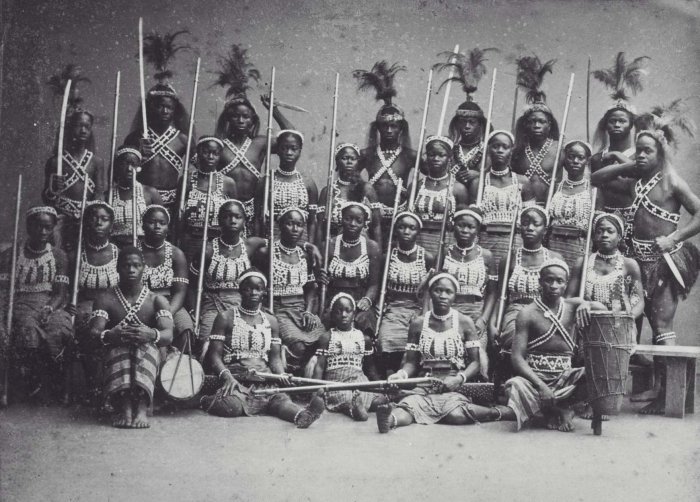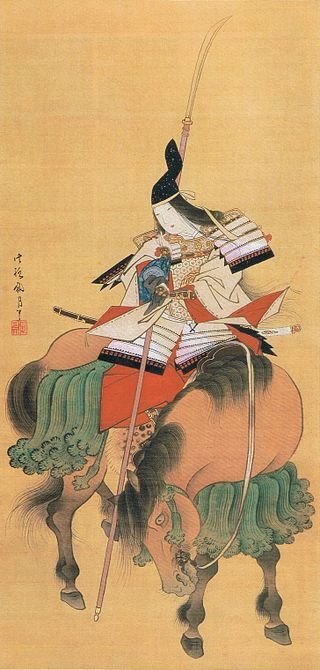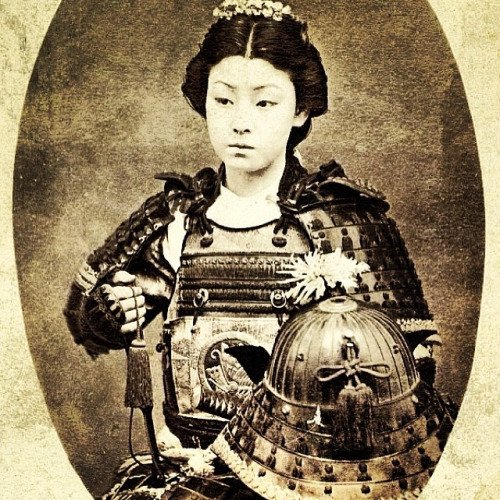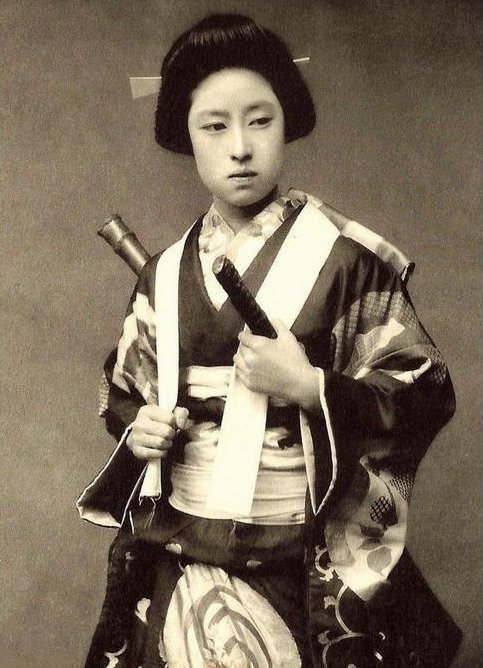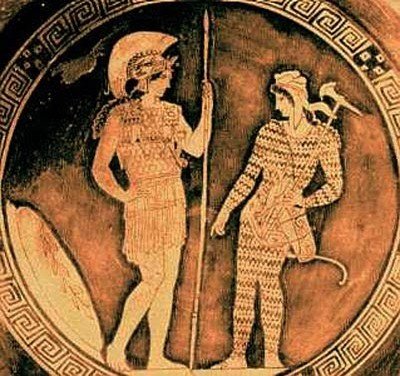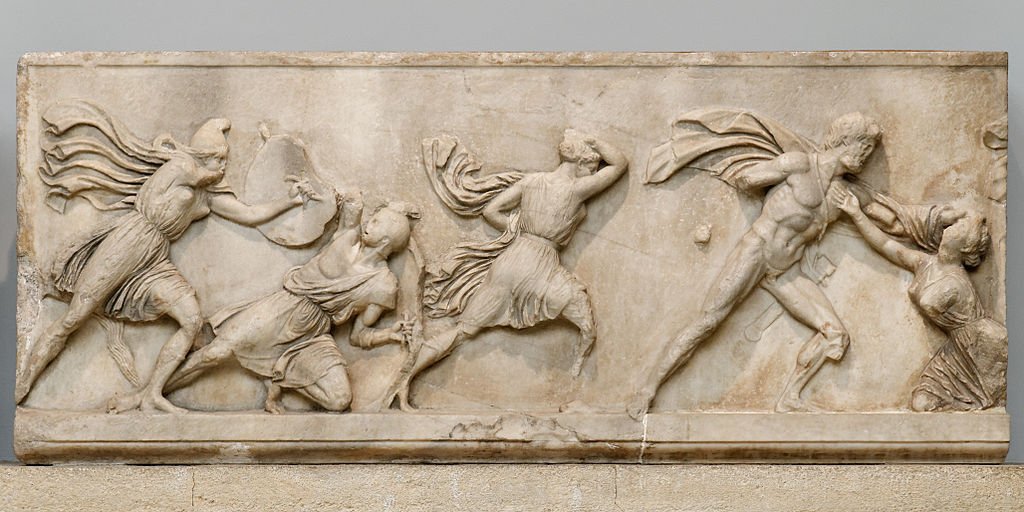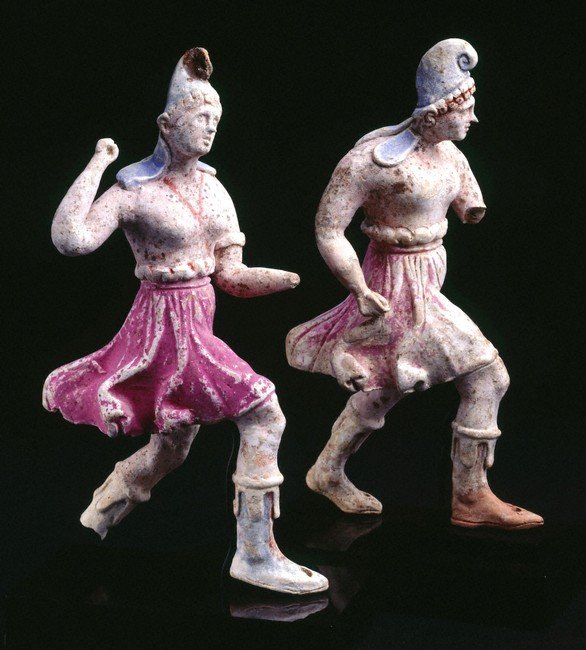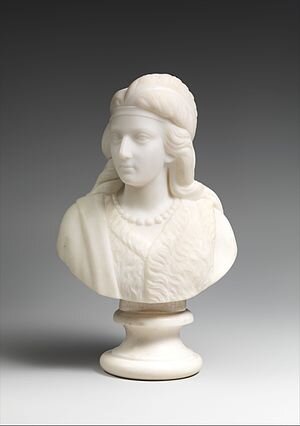40. Real-Life Xenas: Warrior Women Across the World
/Happy 2022 and welcome to another episode of History is Gay! This time, we’re picking up where we left off with Meghan Rose and S.C. Lucier in our discussion of Amazons and real-life warrior women in history! It’s not just the Greco-Roman world that marveled at fierce, strong female fighters, but all over the world! This episode, we’re visiting Benin, Africa to learn about the real-life dora milaje of Black Panther fame, the gender-bending Dahomey Amazons; badass female samurai defending their homesteads in Japan, and Viking shieldmaidens and mythical Valkyries– who may have been a third gender? Strap-in for a whirlwind worldwide tour of gender transgression and badass real-life Xenas we want to see all the movies about!
But first, let me introduce to your fantabulous guest hosts for this episode, Lucier&Rose!
S.C. Lucier
S.C. “Luci” Lucier is an SDC director, writer and librettist. A former member of SCDF Observership Class emerging directors, Lucier is a graduate of Marymount Manhattan College’s Theatre Directing program and recently completed a master’s in Theatre/Museology History at The Graduate Center (NYC). Director: HELD: A Musical Fantasy (Fringe 2016, NYMF 2018). Associate Director: Kerrigan-Lowdermilk’s The Bad Years, the new immersive house party musical. Director: multiple Shakespeare at Hip to Hip Theatre Company, Midsummer 2019. Regular collaborator at Jennifer Jancuska’s (Hamilton) The Bringabout, designed at Joyce Theater for Richard Move’s The Show (Achilles Heels) in which Debbie Harry performed, designed at Lincoln Center’s Clark Studio Theatre, toured on the production team of Martha Graham Dance Company, stage-managed Cape Dance Festival (MA), performed at Baryshnikov Arts Center on roller skates, among others. Lucier captains the championship Gotham Roller Derby team, archives Sally Silver’s choreographic work for NYPL, and is the first staff member of American LGBTQ+ Museum (NYC).
Meghan Rose
Meghan Rose is a composer and musician. She is classically trained in piano, taught herself guitar at 16, joined a ska band in college at University of Wisconsin-Madison and has hopped from band to band and genre to genre ever since. Currently she plays bass in NYC bands Monte and LoveHoney, and in various shows around the city, sometimes even impersonating Courtney Love, Janis Joplin, and Lindsey Buckingham. She has acted as a vocal instructor, bass teacher, and band coach for both the Madison and NYC chapters of Girls Rock Camp. Rose was a music director for the Bartell Theater (Madison) for 6 years, and won awards for best music direction for Xanadu and Bare: A Pop Opera. Written scores include Z-Town: The Zombie Musical (Fringe 2012), an original rock musical called Alice based on Alice in Wonderland (Bartell), Held: A Musical Fantasy (Fringe 2016, NYMF 2018).
You can learn more about S.C. Lucier, Meghan Rose, and Xena: Warrior Musical - The Lost Scroll:
www.xenawarriormusical.com
@XenatheMusical Twitter
@XenaWarrior Musical Instagram
@XenaWarriorMusical Facebook
@XenaWarriorMusical Youtube
You can purchase and download the entire concept album for Xena: Warrior Musical on Bandcamp!
Amazon-Like Women in Africa: the mino/agojie, also known as the Dahomey Amazons!
This fierce military regiment of women warriors of the Kingdom of Dahomey (present-day Benin), originating in the early 19th century, were truly formidable opponents and carry their own impressive stories and legends passed down to current-day Beninese locals!
Illustration of mino women by Chris Hellier
Group of veteran Amazons at a summit meeting held in Abomey, the capital of Dahomey, in 1908
Seh-Dong-Hong-Beh, a mino leader holding the decapitated head of an enemy, illustrated by one of the missionary visitors who wrote 18th and 19th century accounts, Frederick Forbes, in 1851.
Magazine cover depicting the last king of independent Dahomey, Behanzin, flanked by mino attendants and bodyguards.
The Dahomey Amazons around 1890.
A group of Amazons on their trip to Paris, assumed in the late 1800s.
Unknown mino warrior, photographed near the end of the kingdom.
King Gezo, who expanded the female corps from around 600 women to as many as 6,000
Illustration from one of the missionary accounts, depicting a parade of mino after battle displays, severed heads of their enemies displayed on the tops of the walls.
As mentioned in our Pop-Culture Tie-In, Lupita Nyong’o visited Benin in 2019 for a BBC documentary called Warrior Women, in which she went into the entire history of the Dahomey Amazons! It is available online on BBC4’s website, and if you don’t live there, you can use a VPN to check out the full documentary, it’s absolutely worth it! But we have a wonderful clip here for you:
And here’s another video on the Dahomey Amazons that has some great information:
Let’s hop over to Japan and take a look at female samurai warriors, the onna-bugeisha and onna-musha!
The image of the samurai that has been taken hold in history and pop-culture is an extremely masculine one, but there were several female warriors in the bushi throughout Japan’s history that were just as significant as the men, with the specific role as defensive fighters (or if you were an onna-musha, going off to fight and joining the samurai)!
An onna-musha named Ishi-jo wielding a naginata, a curved pole-arm sword made specifically for women which allowed them to fight nimbly and take advantage of distance combat. Illustrated by Utagawa Kuniyoshi, 1848.
The first onna-bugeisha, the legendary Empress Jingū, depicted when she set forth in Silla (modern-day Korea. Painted by Tsukioka Yoshitoshi, 1880. Credit: Waseda University Theatre Museum
Empress Jingū is also the first woman in Japanese history (legend or otherwise) to be featured on a banknote!
Tomoe Gozen, one of the most well-known and respected onna-musha, and considered Japan’s first general. She decapitated an enemy by wrenching his head against the pommel of her saddle! Painted by Kangetsu Shitomi. Collection of Tokyo National Museum
Another onna-musha and contemporary of Tomoe Gozen, Hangaku Gozen. Painted by Yoshitoshi. Credit: US Library of Congress Prints and Photographs Division
Tomoe Gozen at the Battle of Awazu
And then here we have some pictures of Nakano Takeko, and we couldn’t resist showcasing this quote from one report during the siege of Aizu:
With her tied-back hair, trousers, and steely eyes, [she] radiated an intense 'male spirit' and engaged the enemy troops, killing five or six with her naginata.”
A recreated photo of Nakano Takeko, onna-musha of the Aizu Domain, who fought and died in the Boshin War in 1868. She led a group of female warriors called the joshitai, or Girls’ Army, during a renaissance and essentially last-stand of the onna-bugeisha!
Another image of Nakano Takeko.
A photograph of an unknown onna-musha, often misidentified or attributed to Nakano Takeko. This woman is likely an actress, but she still looks SUPER cool!
Statue of Nakano Takeko at Hōkai-ji shrine in Aizubange, Fukushima. Today, many naginata schools are even named for her.
And finally, were there real life Lagerthas out there in the Norselands? We’ve got some Viking women warrior graves and historical artifacts that say so!
Strong female warriors have shown up for centuries in Norse and Scandinavian Viking sagas, depicting fierce shield maidens and mythical Valkyries who fly on horses and escort fallen men to the halls of Valhalla. And recent discoveries of warrior graves throughout Sweden and other northern European territories are showing that they may have been less myth than originally thought!
An image stone from Sweden shows a female figure bearing drinking horns to a rider on an eight-legged horse (what up, Loki), very well depicting a mythical Valkyrie.
Another picture stone from Stenkyrka Parish (Lillbjärs III), depicting a valkyrie guiding a fallen warrior to Valhalla.
Mythical valkyries Hildr, Þrúðr and Hlökk bearing ale in Valhalla (1895) by Lorenz Frølich
The Norse Sagas and histories, like the Saxo Grammaticus and Gesto Danorum, tell the story of several shieldmaidens like Hervor, depicted here as she retrieves Tyrfing, the magical sword of her dead father, on the island of Angantyr. Painted by Christian Gottliebe Kratzenstein
Silver figure of a woman with a drinking horn, found in Birka, Sweden
Various Viking-age jewelry depicting valkyries!
Figurine found in the village of Hårby, on the island of Funen in Denmark. Thought to be dated around 800 BCE and the Viking age, and this one is unique in that it’s one of the few found that are 3 dimensional! She is thought to depict, obviously, a valkyrie, but other possibilities are a shield maiden or the Norse goddess Freya.
Illustration of the infamous Birka, Sweden viking warrior grave, labeled BJ 581 by Hjalmar Stolpe in 1889. In it, you can see this warrior was buried with not one, but two horses, multiple weapons, and even a gamjng set, indicating that she was an officer! Originally thought to be a male grave, osteological and DNA evidence from 2014 and 2017, respectively, confirmed the skeleton was female!
Weapons found in the BJ 581 Birka, Sweden gravesite.
If you want to learn more about all the various warrior women from this episode, check out our full list of sources and further reading below!
Books and Print Articles:
“The Valkyrie’s Gender: Old Norse Shield-Maidens and Valkyries as a Third Gender” by Kathleen M. Self, Feminist Formations, Spring 2014, Vol. 26, No. 1
“Ladies with Axes and Spears” by Santa Jansone, Medieval Warfare, 2014, Vol. 4, No. 2, Theme - Queens and Valkyries - Women as warriors (2014, pp. 9-12
“The ‘Amazons’ of Dahomey” by Robin Law, Paideuma: Mitteilungen zur Kulturkunde, 1993, Bd. 39 (1993), pp. 245-260
Online Articles/Resources:
"The Warrior Woman" by Geoffrey Bunting for History of Yesterday
“Unearthing the Secret Life of a Viking Warrior Woman” by Sarah Durn for Atlas Obscura
“An officer and a gentlewoman from the viking army in Birka” from Science Daily
Gesta Danorum (The Danish History) by Saxo Grammaticus, available on Project Gutenberg
“Warrior Women of West Africa” by Michael Lyons for Xtra Magazine
“The legend of Benin’s fearless female warriors” by Fleur Macdonald for BBC





